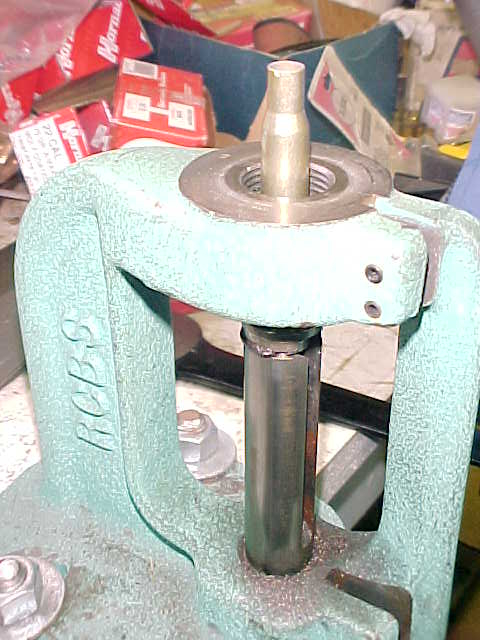
IF YOU REACHED THIS PAGE VIA A SEARCH ENGINE
THIS WILL TAKE YOU TO OUR HOME PAGEThis will take you to the Reloading Index
Steve's Rifle Cartridge Reloading
These are the techniques and equipment that
I use to produce reloaded cartridges for bolt and semi-automatic rifles. Other techniques and equipment may be: better/worse, cheaper/costlier, safer/more dangerous or whatever. Read this stuff and use it or not, at your own risk!Seating the Bullet
Now we have some polished, resized, trimmed, primed and charged cases, and it's time to cap the off with a bullet. (It's not a projectile yet, that happens when the bullet takes flight.)
FIRST, LOOK INTO EACH AND EVERY CASE AND SEE IF ANYTHING LOOK AMISS!! Too much or too little powder or no powder at all are not that uncommon!

Fit a shell holder to the ram of your press, insert a case, and raise the ram fully.
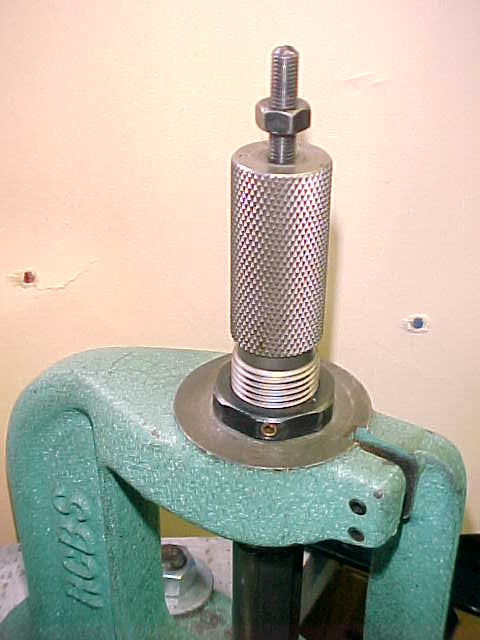
The stem of the seating die is screwed fully upward and the die is screwed into the press until it touches the case, and then UNSCREWED about a quarter turn and locked in place. (If you are going to crimp the case/bullet, see the instructions that came with your die. I never crimp cases, but then I'm not shooting machine guns or rifles with tubular magazines.)
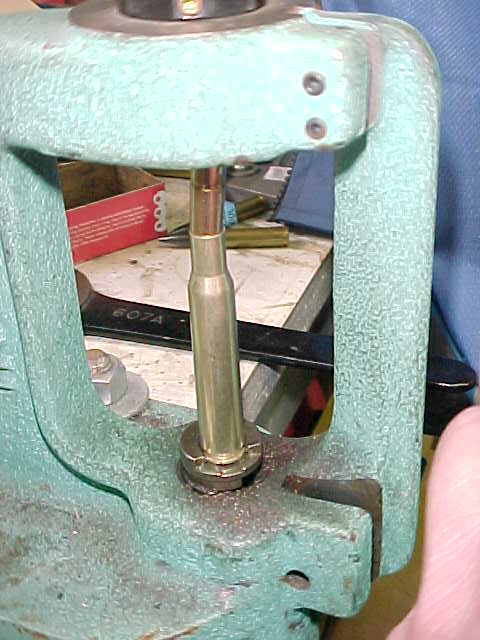
A bullet is placed atop a charged case and the ram raised. If the bullet does not contact the seating stem, the ram is lowered and the stem screwed down a little. The ram is raised again and the process repeated until the bullet is seated "a little.
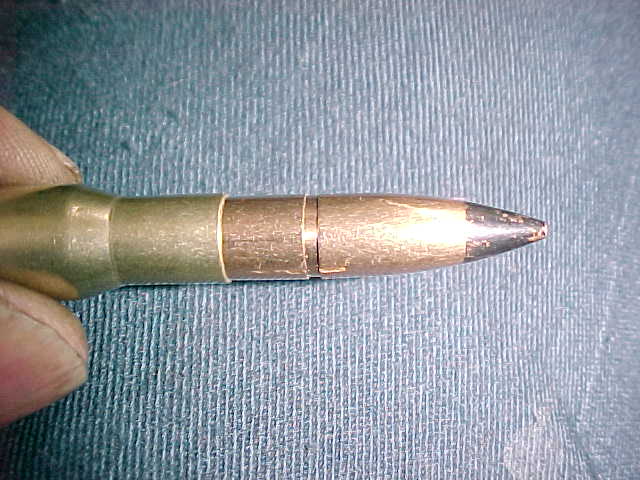
Here is a bullet that has been seated "a little" J . Now the seating stem is screwed down a small amount and the case/bullet is reinserted into the shell holder a seated more and more, until the desired overall length is reached. It is somewhat important that the bullet be "straight" compared to the case. To this end, some loaders seat the bullet about half way, lower the ram slightly, and rotate the case a half-turn. With some seating dies, this helps keep the bullet "concentric".
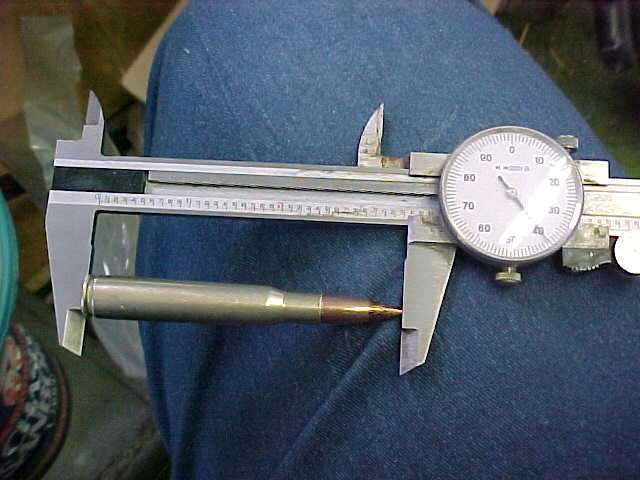
The overall length is checked with a $10 Chinese Dial Caliper, and when the correct length is found, the stem is secured with the lock nut and all the cases can be finished.
The "correct" seating depth is chosen depending upon the use of the reload. If the cartridge is to be fired from a magazine, then the bullet has to be seated so the round will fit into the magazine. Lacking the rifle to use as a test, " Over All Length" (OAL) can be gleaned from reloading books. If the rifle is too be loaded one round at a time, OAL is less important. Many rifles like the bullet to be close or even into the start of the rifling, resulting in loaded rounds that are MUCH longer that published standards. In general, the bullet should be seated at least one bullet diameter into the case mouth. This is just for handling purposes, any shallower, and the bullets may become dislodged. USE EXTREME CARE IN SEATING BULLETS "LONG". Although "long" seating increases case capacity and lowers pressures during firing, the fact that the bullet is closer to the rifling raises pressures. It seems that the rifling wins out every time and the longer the round the higher the pressure. So start short and lengthen with care.
This link is to LONG seated bullets.
This will take you to the Reloading Index